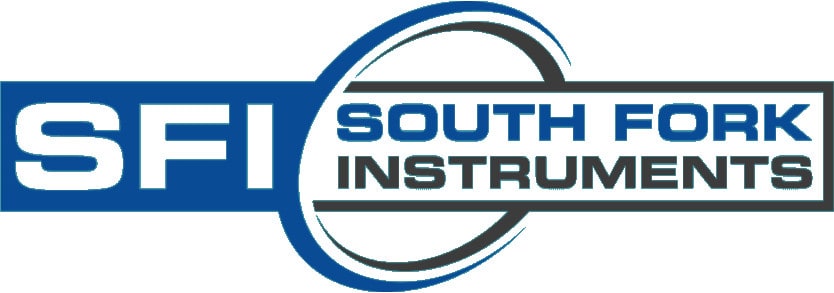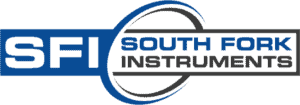Does your business use a level sensor? If you do, what are you using that level measurement for? Inventory tracking, spillage prevention, batch filling, pump or valve control? Whatever the task, level sensors have been around for a long time and are widely used in a great many industries.
There are a variety of level sensors you can choose from and over the years, new technology and new designs have changed the landscape of performance and price. Would an upgrade to new technology benefit your business?
Level Sensor Types
Measuring level is not always easy. While there are many “clean” and/or “easy” level measurement applications and a whole slew of instruments that can give adequate performance in them, there are also a lot of difficult ones when traditional level measurement methods do not work as well. These difficult applications include things like glue, ink, anything with foam, soap, and milk and level sensor performance in these applications has often been unreliable over time, sometimes causing spillage, often requiring maintenance. The cost of ownership of such systems is high. Using new technology level sensors can really help solve performance problems in difficult applications and bring a new level of accuracy to all measurements.
How Are You Making Your Measurement Now?
Older level sensor designs may be one of a mixture of mechanical, electrical or electronic technology. Newer designs are often non-contacting and utilize radar, capacitance or conductance in their operation. Some are single point “switch type” measurements, others give a continuous real time indication of actual level over a minimum to maximum height range. Single point level sensors are used to indicate full (or overfull!) situations while continuous sensors provide an up to date reading of how high (or low!) level is.
Better level measurement can help to reduce loss/waste and cost while improving quality and reducing inefficiency in processing. Do you need better reliability or accuracy? Would a level sensor that has a lower maintenance overhead make a difference to your operation and bottom line? Answer three simple questions to see if you might benefit from a level system upgrade.
What Are You Measuring?
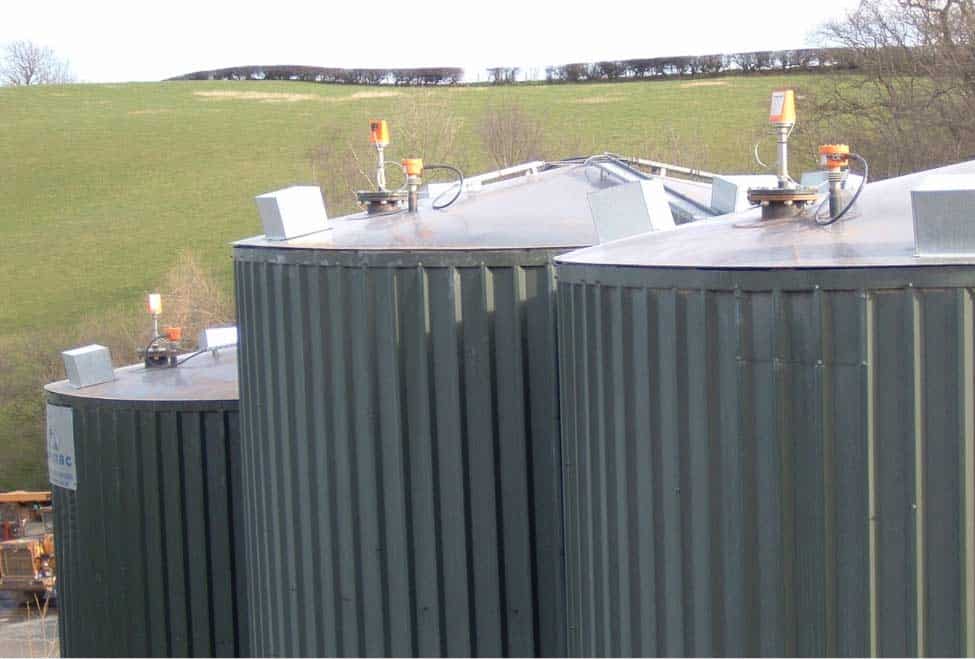
What type of material is in your process? Is it a liquid? A gas? A solid? What type of behavior does this material have? Is it still without movement or constantly in motion? Does it consist of large granules or fine granules? Is it hazardous? Is it corrosive of eroding?
If your current sensor is giving false readings because the level sensor is getting stuck or being damaged by the process material, you should look at a newer technology solution. Non-contacting solutions such as radar don’t have mechanical parts to get stuck and aren’t susceptible to damage from the process.
Where Are You Measuring?
What kind of environment does the measurement take place in? A tank or vessel? Reactor? Silo? Pit or channel? Sphere? Other?
Many level sensors have options that should be included in order to adapt to your environment. Does it need to be able to handle things like dust, damp, being submerged, or vapors when in operation? Does it need to be a special material or have a protective coating to make it suitable for use with your material? If the installation site remote? Are you operating in an explosion-proof environment?
The sensor you get will need to be able to operate where these conditions exist. In the past, sensors that could withstand conditions where they were installed were not necessarily available, so compromises were made to work around the problem. For instance, level gauges on remote were mechanical in nature with visual indication only because there was no way to power them or get an electrical signal back to a central control room. Solar power and wireless or bus type communications have solved issues like this and many modern level systems support such methods.
Does your measurement give you exactly what you want? Is it unreliable and requires a lot of maintenance? Maybe it was a probe type but a change in operation has made the probe the wrong length. Is the measurement intrusive where a non-intrusive measurement would be better? Would you be better served if the level sensor transmitted a signal back to base or is local indication adequate for your purposes? Analog output, internet connectivity, proprietary bus systems, remote control capability, alarm status (either electrical/electronic or visual) or an interface that has continuous readout are all possibilities.
Any room for improvement in the type and specification of sensor currently used, the way it is mounted in your process or the type of signals and connectivity it has is a good reason to investigate newer technology solutions that may be more applicable to your needs.
How Well Is It Measuring?
Another question you’ll need to ask yourself relates to the measurement performance of your existing sensor. If you just need a general indication, your existing sensor may well be “good enough” but for more precise applications like those used for inventory accounting purposes, accuracy is a primary concern. If you can get better accuracy, does your operation benefit? Uptime is of huge importance in continuous systems where levels are constantly moving. Does your current sensor give you reliable service, year after year? Does the measured level change with temperature or pressure? Is measurement drift a constant problem with your unit?
Assessing the performance of your current level systems against what you want from the measurement is a sure way to identify whether an upgrade is needed.
Modern Level Sensor Technology
We’re going to take a look at the most common level sensors on the market today. Each of these sensors has specific characteristics. Once you’ve answered the questions above, you can begin looking for a sensor that fits your needs.
TDR
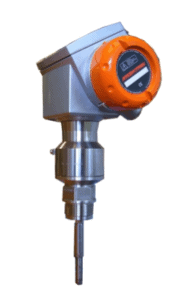 TDR (Time Domain Refectometry) level sensors send a pulse of energy down into the material being measured along a probe (or cable). Where the pulse of energy passes through the liquid surface, it creates a reflected pulse back up the probe. The time it takes for the refection to be received by the transmitter is used to calculate level.
TDR (Time Domain Refectometry) level sensors send a pulse of energy down into the material being measured along a probe (or cable). Where the pulse of energy passes through the liquid surface, it creates a reflected pulse back up the probe. The time it takes for the refection to be received by the transmitter is used to calculate level.
Temperature, density, viscosity, dust and foam have no effect on the measurement performance. In foaming applications, the instrument will read the liquid level, not the foam and coating/fouling of the probe with the product will be ignored.
TDR systems are accurate to a few millimeters and are widely applicable for liquids, slurries, pastes, granules and powders applications.
Radar
 Radar level transmitters are non-contacting instruments that use the FMCW (Frequency Modulated Continuous Wave) Radar principle in their operation. Radar transmitters with their antenna (often equipped a dish or cone) are installed through the top of a vessel or tank and transmit a sweeping high frequency (nominal 10GHz) signal towards the surface of the material to be measured. The signal is reflected off of the surface of the material and received back by the radar transmitter. The difference in frequency between the signal transmission and reception, gives a value that is directly proportional to the distance travelled. Frequency Modulated Continuous Wave Radar systems are millimeter accurate, even when installed in tall vessels and tanks, and provide far superior results when compared to that of other technologies.
Radar level transmitters are non-contacting instruments that use the FMCW (Frequency Modulated Continuous Wave) Radar principle in their operation. Radar transmitters with their antenna (often equipped a dish or cone) are installed through the top of a vessel or tank and transmit a sweeping high frequency (nominal 10GHz) signal towards the surface of the material to be measured. The signal is reflected off of the surface of the material and received back by the radar transmitter. The difference in frequency between the signal transmission and reception, gives a value that is directly proportional to the distance travelled. Frequency Modulated Continuous Wave Radar systems are millimeter accurate, even when installed in tall vessels and tanks, and provide far superior results when compared to that of other technologies.
Radar level transmitters are non-contacting and are therefore unaffected by changes in product characteristic. Temperature, pressure, vapor, density and foam do not affect the readings. Radar gauges are an ideal retrofit replacement for older style level measurement technologies.
Ultrasonic
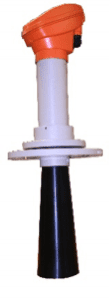 Ultrasonic level transmitters are non-contacting devices that use kilohertz range frequencies to measure level. The advantage of using lower frequencies is that the signal energy will travel further, making them ideal for deep tank measurements in extremely difficult applications like very dusty and dirty environments where traditional measurement systems often fail. Level measurement on difficult solids applications in excess of 60 meters is possible with an ultrasonic level system.
Ultrasonic level transmitters are non-contacting devices that use kilohertz range frequencies to measure level. The advantage of using lower frequencies is that the signal energy will travel further, making them ideal for deep tank measurements in extremely difficult applications like very dusty and dirty environments where traditional measurement systems often fail. Level measurement on difficult solids applications in excess of 60 meters is possible with an ultrasonic level system.
Other Sensors
Other modern level sensors include capacitance/RF admittance transmitters, laser based optical level transmitters, even camera based “sight” transmitters.
Choosing Sensors
As you can probably see, the state-of-the-art with regards to level measurement has moved towards frequency based instruments and those instruments are producing far better results than many of the older technology designs (i.e. float measurements). These new technologies are applicable to both liquids and solids in many cases, providing an opportunity to have a common instrument set for a great variety of different measurements. This common set makes staff training and maintenance simple, saving cost and definitely increasing efficiency as they are all highly reliable and need very little attention over several years of use.
You’ll be able to identify and find a level sensor that is best for your business if you spend time answering the important questions. Not having these answers can lead to making a quick decision on a sensor, and ultimately, the success or failure of the measurement.
Ultimately, level sensors help to determine the amount of material in a tank/vessel/pit/stream through continuous monitoring and can send an alert if the level drops or rises beyond a certain point. Knowing what is going on can, on one hand, prevent spills and product loss with the attendant cost, environmental and safety implications, while on the other ensure your material inventories are accurate and you never run out of raw material, keeping production running and profits rolling in.
Along with accurate and reliable level measurement, you should also make sure you have accurate flow measurements too. Flow, like level, can have a big impact on your bottom line.
